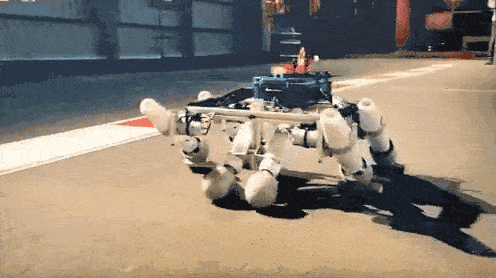Welcome back to The Kyote! Today is Alley Day! (June 2nd — 6/2 — can be pronounced ro/ji, the Japanese word for alley).
So here’s to exploring nooks and crannies, Dear Readers…and now let’s get on with this week’s edition:
THE QUIZ
A picture any Japanese person will understand instantly. Do you?
Question: what does this symbol mean?
Answer at the foot of the mail.
THE HEADLINES
Making the news this week in Japan…
1. $1 = ¥157
[🥲]
2. Kyoto University Unveils World’s First Wooden Satellite
3. ¥48bn ($300m) in Bitcoin “Lost” (Don’t Say Stolen)
[DMM Bitcoin to refund customers "from other group companies" (i.e. their porn operation)]
THE HASHTAG
Trending on Japanese Twitter/X this week:
Vibrator* Racing
(* Electric Massager)
Champion robot powered by vibrators* (* electric massagers)
Night of the Magical Modification (魔改造の夜) is a popular science show from national broadcaster NHK where geeks get together to science the hell out of everyday objects.
This week the producers outdid themselves with an episode entitled The Electric Massager 25 Meter Drag Race.
(An electric massager, commonly referred to as a Hitachi, is a personal massage device which, when applied to sensitive regions of the body, may result in awful side effects including cumming like the clappers.)
So, why on earth would the Japanese equivalent of PBS or the BBC decide it would be a good idea to broadcast a competition where contestants used vibrators* to power racing robots?
It could only be naivety, or calculated clickbait. The trailer, with its tagline “The electric massager your father loves” over a man ecstatically running one over his own shoulders had a giant wad of tongue in cheek — and reaction by some J netizens told its own story, with disgust in high supply, along with predictions of the imminent downfall of society when NHK is allowed to produce such filth.
But the competition itself was conducted with loony earnestness, by students from the T-Bashi competitive robot team from Toyohashi University of Technology, with support from no less than car manufacturer Suzuki.
Whiteboards were filled with equations, and a cornucopia of different designs and concepts were trialed, ending in the champion entry pictured above (unfortunately the takedown police have been out in force, so don’t expect so find any footage on Youtube).
Public reaction was not all negative though — our favorite X comment was the following:
Hey schoolkids — all that math you learn does actually come in handy when you become an adult!
Watch: 1 minute trailer from NHK’s official site (may not be available in some regions)
THE READ
Last weekend we were at an event in our backyard, Central Kyoto, trying to convince people to become you — i.e. dear readers of The Kyote.
Here’s how the whole thing came about, and why a particular object became affectionately known as The Bastard.
THE HISTORY
When Criminal Profiling Goes Wrong
Illustration: Cody Lee Berry
Early morning, May 27th 1997. The custodian at Tomogaoka Junior High School in Kobe finds the head of an 11 year old boy impaled on the school gates.
A note scrawled in red ink was stuffed in the mouth of the dead boy, reading:
Now the game begins
Stupid police
Try to stop me
I find killing extremely amusing
I just can't help but want to see people die
I want filthy vegetables to die
I require a bloody judgment for my long-standing grudge
酒鬼薔薇 the school killer
The note also included, in misspelled English: SHOOLL KILLER
The gruesome murder and decapitation of a child set off an instant nationwide panic, and a gigantic police operation was launched to find the killer, who psychological profilers judged a middle-aged man with a long-standing grudge against the education system.
However, when the killer was finally caught — and their other murder victim discovered — it turned out the profile had been disastrously wrong.
Next week’s edition of The Kyote will have the full story of 1997’s Kobe child murders, including why the killer has been free since 2005, all illustrated with exclusive art from the maestro Cody Lee Berry.
THE LINKS
Good stuff you should read:
Hidden Japan’s The Chicken at War explains an enduring mystery: how KFC managed to brainwash Japan into thinking fried chicken is a traditional Christmas dish in the West.
Japan Unrivaled with a quick guide to some island getaways. We fancy Rebun and Rishiri in the height of summer.
THE ANSWER
Question: what does this symbol mean?
Answer: someone who is newly-qualified
The symbol began on cars, warning that the driver is newly-qualified, but has now spread to other areas of life, so if you spot a confused-looking shop clerk wearing one — they’ve just started the job.
Until next week,
The Kyote
New? Sign Up Here
Feedback? Just Hit Reply
The Kyote is published in Kyoto, Japan every Sunday at 19:00 JST
















I can be impatient but when I see the newly qualified designation my impatience falls away.